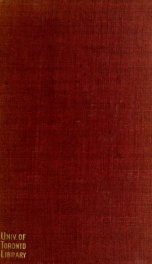quintilian

Marcus Fabius Quintilianus (ca. 35 – ca. 100) was a Roman rhetorician from Hispania, widely referred to in medieval schools of rhetoric and in Renaissance writing. In English translation, he is usually referred to as Quintilian, although the alternate spellings of Quintillian and Quinctilian are occasionally seen, the latter in older texts. Quintilian was born ca. 35 in Calahorra, La Rioja in Hispania. His father, a well-educated man, sent him to Rome to study rhetoric early in the reign of Nero. While there, he cultivated a relationship with Domitius Afer, who died in 59. "It had always been the custom … for young men with ambitions in public life to fix upon some older model of their ambition … and regard him as a mentor" (Kennedy, 16). Quintilian evidently adopted Afer as his model and listened to him speak and plead cases in the law courts. Afer has been characterized as a more austere, classical, Ciceronian speaker than those common at the time of Seneca, and he may have inspired Quintilian’s love of Cicero. Sometime after Afer's death, Quintilian returned to Spain, possibly to practice law in the courts of his own province. However, in 68, he returned to Rome as part of the retinue of Emperor Galba, Nero's short-lived successor. Quintilian does not appear to have been a close advisor of the Emperor, which probably ensured his survival after the assassination of Galba in 69. After Galba's death, and during the chaotic Year of the Four Emperors which followed, Quintilian opened a public school of rhetoric. Among his students were Pliny the Younger, and perhaps Tacitus. The Emperor Vespasian made him a consul. The emperor "in general was not especially interested in the arts, but…was interested in education as a means of creating an intelligent and responsible ruling class" (19). This subsidy enabled Quintilian to devote more time to the school, since it freed him of pressing monetary concerns. In addition, he appeared in the courts of law, arguing on behalf of clients. Of his personal life, little is known. In the Institutio Oratoria, he mentions a wife who died young, as well as two sons who predeceased him. Quintilian retired from teaching and pleading in 88, during the reign of Domitian. His retirement may have been prompted by his achievement of financial security and his desire to become a gentleman of leisure. Quintilian had also survived under several emperors; the reigns of Vespasian and Titus were relatively peaceful, but Domitian was reputed to be difficult even at the best of times. Domitian’s increasing cruelty and paranoia may have prompted the rhetorician to quietly distance himself. The emperor does not appear to have taken offence; in the year 90, Quintilian was made tutor of Domitian's two grand-nephews and heirs. Even this may not have been a vote of confidence; "by the time [Quintilian] finished the Institutio Oratoria, the two young men—potential rivals to a shaky throne—had vanished into exile" (Murphy, xx). Otherwise, Quintilian spent his retirement writing his Institutio Oratoria. The exact date of his death is not known, but is believed to be sometime around 100. He does not appear to have long survived Domitian, who was assassinated in 96. The only extant work of Quintilian is a twelve-volume textbook on rhetoric entitled Institutio Oratoria, published around AD 95. This work deals not only with the theory and practice of rhetoric, but also with the foundational education and development of the orator himself. An earlier text, De Causis Corruptae Eloquentiae ("On the Causes of Corrupted Eloquence") has been lost, but is believed to have been "a preliminary exposition of some of the views later set forth in [Institutio Oratoria]" (Kennedy, 24). In addition, there are two sets of declamations, Declamationes Majores and Declamationes Minores, which have been attributed to Quintilian. However, there is some dispute over the real writer of these texts; "Some modern scholars believe that the declamations circulated in his name represent the lecture notes of a scholar either using Quintilian's system or actually trained by him" (Murphy, XVII-XVIII). As mentioned above, Quintilian wrote his book during the last years of the reign of Emperor Domitian. In the tradition of several Roman emperors, such as Nero and Caligula, Domitian’s regime grew harsher as time went on. “[An] active secret police preyed on the Roman population, and even senators were encouraged in various ways to inform on each other…under Domitian, even the slightest suspicion of disrespect for the emperor became a capital crime” (xx). Social and political corruption were rife. In a move of utmost irony, the debauched Domitian appointed himself “censor perpetuus, making himself responsible for public morals” (xx). Against this backdrop, it was very difficult to find orators in the tradition of Cicero, part of whose "fame as an orator stems from his public denunciations of enemies of the state" (XIX). Such positions were simply too dangerous to take during the reign of the emperors since Augustus. Therefore, the role of the orator had changed since Cicero's day. Now, they were more concerned with pleading cases than anything else. Into this time, Quintilian attempted to interject some of the idealism of an earlier time. “Political oratory was dead, and everyone in Rome knew it was dead; but Quintilian deliberately chooses the oratory of a past generation as his educational ideal” (Gwynn, 188). In Quintilian’s time, rhetoric was primarily composed of three aspects: the theoretical, the educational, and the practical. Institutio Oratoria does not claim originality; Quintilian drew from a number of sources in compiling his work. This eclecticism also prevented him from adhering too rigidly to any particular school of thought on the matter, although Cicero stands out among the other sources. Quintilian also refused any short, simple lists of rules; he evidently felt that the study and art of rhetoric could not be so reduced. This might explain the length of Institutio Oratoria, which consists of twelve books. From the middle of the first century BC to Quintilian's time, there had been a flowering of Roman rhetoric. But by Quintilian's time, the current of popular taste in oratory was rife with what has been called "silver Latin," a style that favored ornate embellishment over clarity and precision. Quintilian’s Institutio Oratoria can in many ways be read as a reaction against this trend; it advocates a return to simpler and clearer language. It may also reflect the influence of the late Emperor Vespasian, who was “[a] man of plebeian stock,…a down-to-earth realist with the common touch” (Murray, 431); Vespasian disliked excess and extravagance, and his patronage of Quintilian may have influenced the latter’s views of language. Cicero is the model Quintilian adopts as the standard-bearer for this form; during the previous century, Cicero’s far more concise style was the standard. This relates to his discussion of nature and art. Quintilian evidently preferred the natural, especially in language, and disliked the excessive ornamentation popular in the style of his contemporaries. Deviating from natural language and the natural order of thought in pursuit of an over-elaborate style created confusion in both the orator and his audience. “Even difficult questions can be dealt with by an orator of moderate ability if he is content to follow nature as his leader and does not give all his attention to a showy style” (Gwynn, 78). Institutio Oratoria is effectively a comprehensive textbook of the technical aspects of rhetoric. From the eleventh chapter of Book II to the end of Book XI, Quintilian covers such topics as natural order, the relation of nature and art, invention, proof, emotion, and language. Perhaps most influential among the ideas discussed is his examination of tropes and figures, found in Books 8 and 9. “[A] trope involves the substitution of one word for another, a figure does not necessarily entail any change either to the order or the meaning of words” (Leitch, 156). An example of a trope would be metaphor, the altering of a word’s meaning. A figure, on the other hand, gives the words a new aspect or greater emotional value. Figures are divided into figures of thought, which may make proof seem more forceful, intensify emotions, or add elegance or ornamentation; and figures of diction, which is further subdivided into “the grammatical, in which the form of the word creates the figure, and the rhetorical, in which the position of the word is the primary factor” (Gwynn, 88). A good part of this work, of course, deals with the technical aspects of rhetoric and the Institutio Oratoria stands — along with Aristotle's 'Rhetoric' and Cicero's works — as one of the ancient world's greatest works on rhetoric. He organizes the practice of oratory into five canons: inventio (discovery of arguments), dispositio (arrangement of arguments), elocutio (expression or style), memoria (memorization), and pronuntiatio (delivery). For each canon, particularly the first three, he provides a thorough exposition of all the elements that must be mastered and considered in developing and presenting arguments. The thorough and sensible presentation reflect his long experience as orator and teacher, and in many ways the work can be seen as the culmination of Greek and Roman rhetorical theory. Throughout these and other discussions, Quintilian remains concerned with the practical, applicable aspect, rather than the theoretical. Unlike many modern theorists, he “does not see figurative language as a threat to the stability of linguistic reference” (Leitch, 156). The referential use of a word was always the primary meaning, and the use of figurative language was merely an addition to it, not a replacement for it. “My aim, then, is the education of the perfect orator” (Quintilianus, 1.Preface.9). Book I of Institutio Oratoria discusses at length the proper method of training an orator, virtually from birth. This focus on early and comprehensive education was in many ways a reflection of Quintilian’s career; Emperor Vespasian’s influence on the official status of education marked the period as one of conscientious education. Quintilian’s contribution to this line of thought, aside from his long career as a public educator, was the opening of his text, and it is regarded as a highlight of the discussion:
do you like this author?
What readers are saying
What do you think? Write your own comment on this book!
write a commentWhat readers are saying
What do you think? Write your own comment on this author!
write a commentBook list

The instituto oratoria. With an English translation by H.E. Butler 2
Series:
Unknown
Year:
Unknown
Raiting:
2.5/5
26 33
Show more
add to favoritesadd In favorites

The instituto oratoria. With an English translation by H.E. Butler 1
Series:
Unknown
Year:
Unknown
Raiting:
3.5/5
26 33
Show more
add to favoritesadd In favorites

Institutes of eloquence; or, The art of speaking in public, in every character and capacity. Translated into English after the best Latin editions, with notes critical and explanatory by W. Guthrie 1
Series:
Unknown
Year:
Unknown
Raiting:
3/5
26
Show more
add to favoritesadd In favorites
Book list

The instituto oratoria. With an English translation by H.E. Butler 2
Series:
Unknown
Year:
Unknown
Raiting:
2.5/5
26 33
Show more
add to favoritesadd In favorites

The instituto oratoria. With an English translation by H.E. Butler 1
Series:
Unknown
Year:
Unknown
Raiting:
3.5/5
26 33
Show more
add to favoritesadd In favorites

Institutes of eloquence; or, The art of speaking in public, in every character and capacity. Translated into English after the best Latin editions, with notes critical and explanatory by W. Guthrie 1
Series:
Unknown
Year:
Unknown
Raiting:
3/5
26
Show more
add to favoritesadd In favorites

Institutes of eloquence; or, The art of speaking in public, in every character and capacity. Translated into English after the best Latin editions, with notes critical and explanatory by W. Guthrie 2
Series:
Unknown
Year:
Unknown
Raiting:
3/5
26
Show more
add to favoritesadd In favorites

Institutionis oratoriae, libri duodecim; recensuit Carolus Halm
Series:
Unknown
Year:
Unknown
Raiting:
4.5/5
26
Show more
add to favoritesadd In favorites
![Quintilien et Pline le Jeune : oeuvres complètes ; avec la traduction en français [et] publiées sous la direction de M. Nisard_cover](/img/standard/standard_book.png)
Quintilien et Pline le Jeune : oeuvres complètes ; avec la traduction en français [et] publiées sous la direction de M. Nisard
Series:
Unknown
Year:
Unknown
Raiting:
3/5
De l'institution oratoire / Quintilien -- Lettres / Pline le Jeune -- Panégyrique de Trajan / Pline le Jeune 26
Show more
add to favoritesadd In favorites

The Institutio oratoria of Quintilian 3
Series:
Unknown
Year:
Unknown
Raiting:
3/5
Bibliography: v. 1, p. xi-xiii 35 39
Show more
add to favoritesadd In favorites

The Institutio oratoria of Quintilian 4
Series:
Unknown
Year:
Unknown
Raiting:
4/5
Bibliography: v. 1, p. xi-xiii 35 39
Show more
add to favoritesadd In favorites

De institutione oratoria libri duodecim; 1
Series:
Unknown
Year:
Unknown
Raiting:
4.5/5
Vol. 5-6 "Supplementa annotationis et indicem curavit Car. Timoth Zumptius"; and, "Lexicon et Indices continens curavit Eduardus Bonnellus". Publisher varies: vol. 4-6 "sumtibus F.C.G. Vogelii." 26
Show more
add to favoritesadd In favorites

De institutione oratoria libri duodecim; 3
Series:
Unknown
Year:
Unknown
Raiting:
3/5
Vol. 5-6 "Supplementa annotationis et indicem curavit Car. Timoth Zumptius"; and, "Lexicon et Indices continens curavit Eduardus Bonnellus". Publisher varies: vol. 4-6 "sumtibus F.C.G. Vogelii." 26
Show more
add to favoritesadd In favorites

The tenth and twelfth books of the Institutions;
Series:
Unknown
Year:
Unknown
Raiting:
3/5
26
Show more
add to favoritesadd In favorites

Il libro decimo della instituzione oratoria
Series:
Unknown
Year:
Unknown
Raiting:
4.5/5
26
Show more
add to favoritesadd In favorites

Institvtionis oratoriae libri XII;
Series:
Unknown
Year:
Unknown
Raiting:
4/5
Vol. 1. Libros I-VI.- Vol. 2. Libros VII-XII 26
Show more
add to favoritesadd In favorites

De institutione oratoria libri duodecim; recisis quae minus necessaria videbantur
Series:
Unknown
Year:
Unknown
Raiting:
4/5
26
Show more
add to favoritesadd In favorites

De institutione oratoria libri duodecim; 4
Series:
Unknown
Year:
Unknown
Raiting:
4.5/5
Vol. 5-6 "Supplementa annotationis et indicem curavit Car. Timoth Zumptius"; and, "Lexicon et Indices continens curavit Eduardus Bonnellus". Publisher varies: vol. 4-6 "sumtibus F.C.G. Vogelii." 26
Show more
add to favoritesadd In favorites
What readers are saying
What do you think? Write your own comment on this author!
write a commentif you like quintilian try:
readers also enjoyed
What readers are saying
What do you think? Write your own comment on this author!
write a commentGenre
if you like quintilian try:
readers also enjoyed
Do you want to exchange books? It’s EASY!
Get registered and find other users who want to give their favourite books to good hands!




